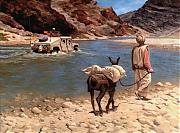The technology of the Twenty-first Century – the “new media” – has made it possible for virtually anyone to have immediate access to an audience of millions around the world and to be somewhat anonymous. This technology has enabled and empowered the rise of a new enemy. This enemy is not constrained by the borders of a nation or the International Laws of War. The new media allows them to decentralize their command and control and disperse their elements around the globe. They stay loosely connected by an ideology, send cryptic messages across websites and via e-mail and recruit new members using the same new media technologies.
Responding to this challenge requires changes in our approach to warfare. The one thing we can change now does not require resources – just a change in attitudes and the organizational culture in our Army. Recent experiences in Iraq illustrate how important it is to address cultural change and also how very difficult it is to change culture: After MNF-I broke through the bureaucratic red-tape and was able to start posting on YouTube, MNF-I videos from Iraq were among the top ten videos viewed on YouTube for weeks after their posting. These videos included gun tape videos showing the awesome power the US military can bring to bear. Using YouTube – part of the new media – proved to be an extremely effective tool in countering an adaptive enemy. Here are some areas that our Army will need to address if we are going to change our culture with respect to this critical area...







Bookmarks